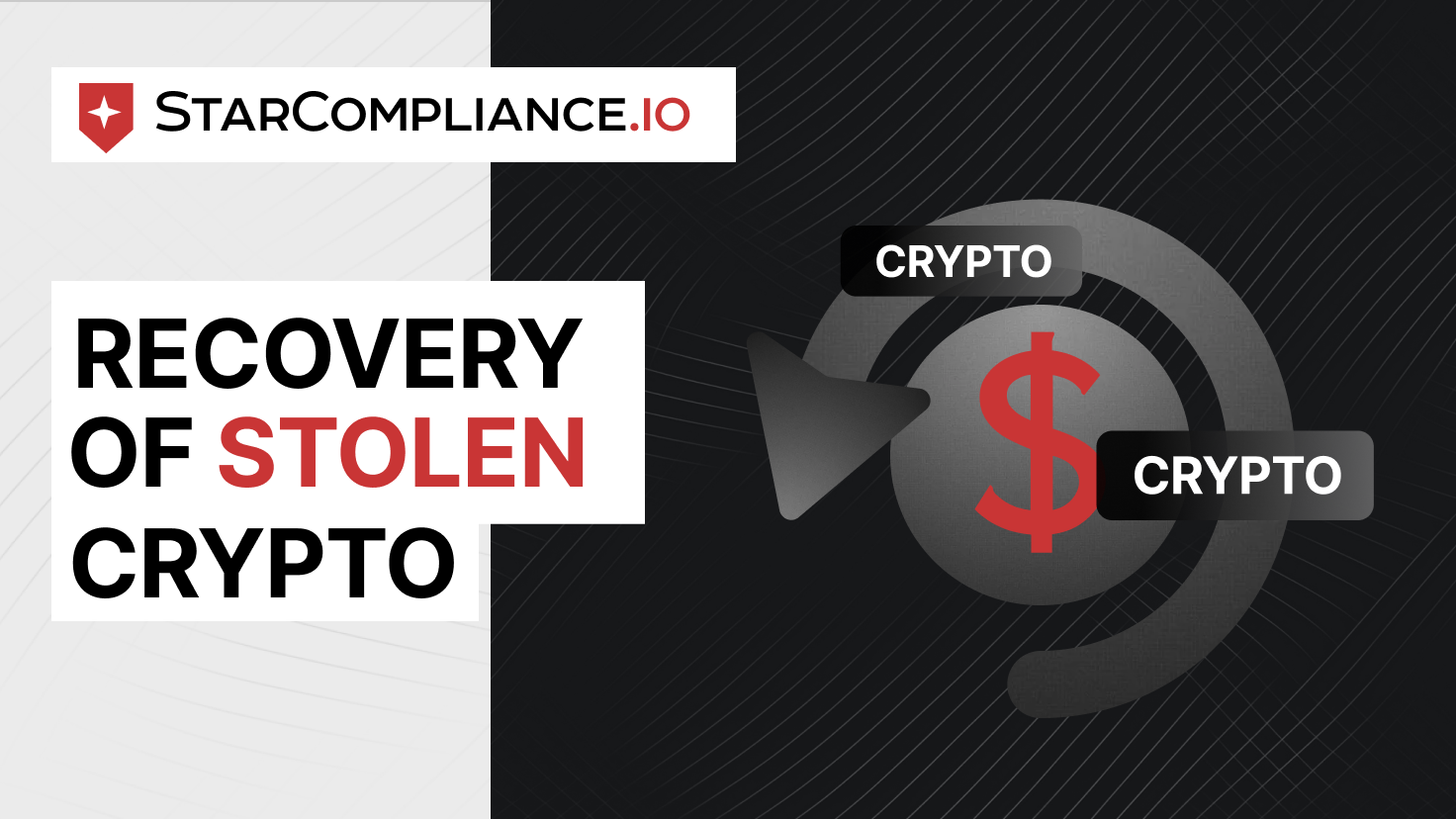
Crypto Recovering: StarCompliance’s Proven Strategy
2024-11-14
Crypto recovering stolen cryptocurrency can be a daunting task, especially when dealing with the complexities of the digital world. However, with the right knowledge and strategies, it’s possible to reclaim your lost assets. This guide provides insights into common theft methods and offers practical advice on how to work with authorities and financial institutions to recover your stolen funds.
Understanding the Crypto Theft Landscape
Cybercriminals are constantly devising new methods to steal cryptocurrency. Common scams include:
- Direct Theft. Scammers posing as legitimate entities or individuals request cryptocurrency transfers under false pretenses.
- Investment & Romance Scams. Attackers build trust and then exploit it to convince victims to invest in fraudulent schemes or send crypto as a supposed gift.
- Phishing. Fake websites and emails mimic legitimate platforms to steal login credentials and other sensitive information.
- Exploits. Attackers exploit vulnerabilities in software or smart contracts to gain unauthorized access to funds.
- Wallet Hijacking: Targeted attacks aimed at compromising digital wallets and stealing private keys.
Recognizing these methods is the first step toward protecting yourself.
Tracing the Digital Trail: Blockchain Forensics
Blockchain technology’s immutability is a double-edged sword. While it makes transactions secure, it also leaves a permanent record of every movement of funds. This creates a digital trail that can be followed using blockchain explorers, like Tronscan for the Tron blockchain, and specialized forensic tools.
These tools allow investigators to analyze transaction patterns, identify suspicious wallets, and follow the money across different blockchains. Crypto recovering efforts must be swift to maximize the chances of locating and returning stolen funds before they are moved to untraceable wallets..
The Role of Legal Authorities and Financial Institutions
Recovering stolen cryptocurrency often necessitates collaborating with cryptocurrency exchanges and stablecoin issuers. These entities possess the authority to freeze and potentially return stolen funds. However, action typically requires a formal request from legal authorities.
Engaging competent authorities provides several crucial advantages.
- First, it establishes the legal validity of the request, making it enforceable.
- Second, it provides procedural safeguards and ensures that investigations are conducted according to established legal protocols.
- Finally, it lends credibility to the case, increasing the likelihood of cooperation from exchanges and issuers.
A detailed incident report, including comprehensive transaction data, wallet addresses, and other relevant information, is essential for effective engagement with authorities. Specialized firms like StarCompliance can assist in preparing these reports and guide you through the legal procedures.
Recovering Your Assets: A Step-by-Step Explanation
Refunds from a centralised crypto exchange
The crypto recovering process starts when stolen funds are located. If they end up on a centralized exchange, investigators can request that the exchange freeze the account associated with the stolen funds. This step is crucial to prevent further loss.
The exchange then responds with transaction history and KYC (Know Your Customer) information for the account holder.
A temporary freeze is typically implemented for a limited time, which can be extended if necessary. Meanwhile, investigators is working to obtain a court order for a permanent freeze of the assets. Once the court order is in place, negotiations with the exchange commence to facilitate the return of the funds. Legal authorities provides the victim’s wallet address, and the exchange executes the transfer.
Refund from a Stablecoin Wallet
If the stolen funds are traced to a stablecoin wallet like Tether, the process is slightly different. Authorities sends a formal request to Tether to block the suspect’s wallet address. Tether verifies the LEA’s identity, a one-time process for each agency. After verification, Tether blocks the wallet.
A crucial point to understand is that the stolen funds in the blocked wallet are not directly recoverable. A three-month waiting period follows, during which Tether investigates any claims from third parties asserting ownership of the funds. After this period, the victim is verified by Tether and signs a contract agreeing to the emission of new USDT.
Tether then mints new USDT and transfers it to the victim’s wallet, typically in installments over a period determined by the complexity of the case. Patience is key throughout this process, as it can take months or even years.
Protecting Yourself from Future Attacks
Protecting your crypto assets requires proactive measures.
- Strong Passwords & 2FA. Use unique, complex passwords and enable two-factor authentication.
- Hardware Wallets. Store private keys offline on a hardware wallet.
- Recognize Scams. Be wary of unsolicited offers and requests for private keys.
- Stay Informed. Keep up-to-date on security threats and best practices.
By implementing these security measures and staying vigilant, you can significantly reduce your risk of becoming a victim of crypto theft. Proactive security is the best defense in the ever-evolving landscape of digital assets.
Conclusion
Crypto recovering stolen cryptocurrency can be a complex process, but it’s often possible to successfully reclaim your lost assets. Don’t let the intricacies deter you. By understanding the steps involved and seeking expert assistance, you can significantly improve your chances of reclaiming your stolen assets.
Contact StarCompliance today for a consultation. We’re here to help you navigate the challenges of crypto recovery and fight for what’s rightfully yours.